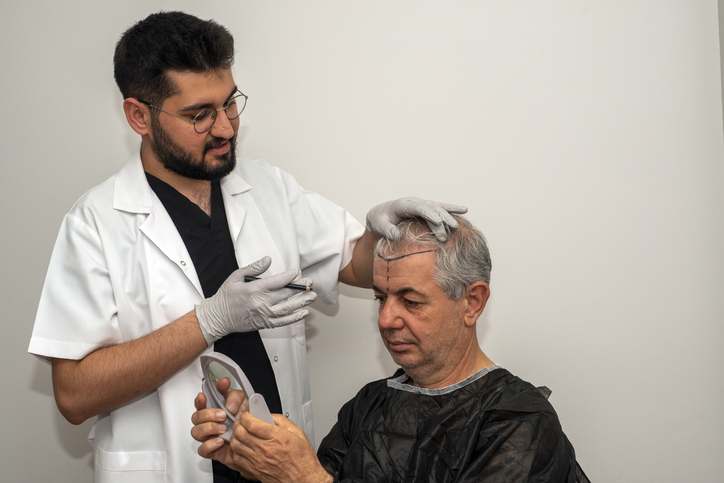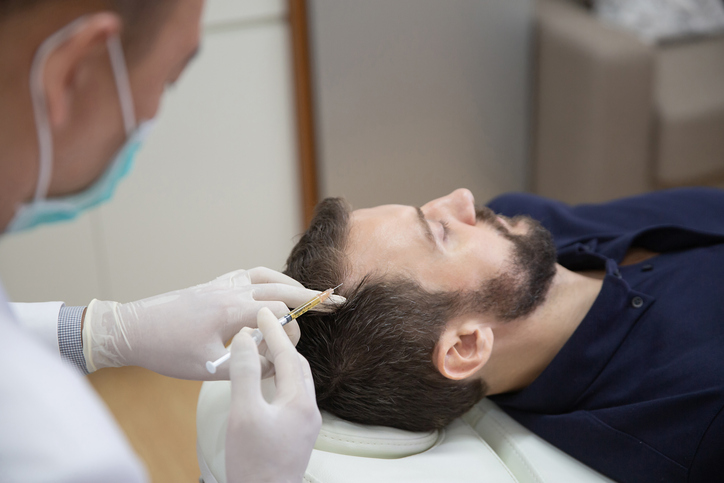Hair loss can be a distressing experience for many individuals. Fortunately, advances in medical science have led to the development of hair transplantation techniques that provide an effective and long-term solution. But have you ever wondered about the science behind hair transplantation? Let us explore the intricate process of hair transplantation and the scientific principles that make it possible.
- Understanding Hair Growth and Loss: To comprehend hair transplantation, it is essential to understand the basics of hair growth and loss. Hair follicles are small structures embedded in the scalp that produce hair. Each hair follicle goes through cycles of growth, rest, and shedding. In individuals experiencing hair loss, the hair follicles gradually become miniaturised, leading to thinner and shorter hair strands until they eventually stop producing hair altogether.
- Donor Dominance: The success of hair transplantation lies in the concept of “donor dominance.” This principle, discovered by Dr Norman Orentreich in the 1950s, states that hair follicles taken from the donor area (typically the back or sides of the scalp) retain their genetic properties even when transplanted to areas affected by hair loss. The hair from the donor area is resistant to the effects of the hormone dihydrotestosterone (DHT), which is responsible for hair miniaturisation and balding in genetically predisposed individuals.
- Harvesting Techniques: Hair transplantation involves the extraction of hair follicles from the donor area for transplantation to the recipient area. There are two primary harvesting techniques used in hair transplantation: Follicular Unit Transplantation (FUT) and Follicular Unit Extraction (FUE).
- FUT: In FUT, a strip of scalp containing hair follicles is surgically removed from the donor area. The wound is then sutured, leaving a linear scar that can be concealed by surrounding hair. The strip is then dissected under a microscope into individual follicular units, which are subsequently transplanted into the recipient area.
- FUE: FUE involves the extraction of individual hair follicles directly from the donor area using a tiny punch tool. The follicles are then transplanted into the recipient area. FUE leaves tiny, round scars that are less noticeable than the linear scar in FUT. With recent advancements, FUE can be performed manually or with the assistance of robotic technology, enhancing precision and efficiency.
- Transplantation: Once the hair follicles are harvested, they need to be transplanted into the recipient area. The recipient area is prepared by making tiny incisions or recipient sites, taking into consideration the natural angle, direction, and density of the existing hair. This meticulous process ensures that the transplanted hair will grow in a natural-looking manner.
One fascinating aspect of hair transplantation is the role of angiogenesis, the formation of new blood vessels. During the hair transplantation process, the body responds to the trauma by initiating the development of new blood vessels in the transplanted area. These blood vessels provide the necessary oxygen and nutrients to support the growth of the transplanted hair follicles.
- Shedding: After the transplantation procedure, the transplanted hair follicles undergo a temporary resting phase. This phase can cause the transplanted hair to shed within a few weeks of the procedure. While this shedding can be alarming, it is a natural part of the hair growth cycle. The hair follicles remain intact beneath the skin, and over time, new hair will begin to grow from these follicles.
- The Healing Process and Growth: The success of a hair transplant not only depends on the transplantation itself but also on the healing process and subsequent hair growth. Following the procedure, the body initiates the healing response, and small scabs form at the site of the incisions. These scabs gradually fall off within a week or two.
Within a few months, the transplanted hair follicles enter the anagen phase, the active growth phase of the hair cycle. New hair starts to grow from the transplanted follicles, gradually increasing in length and density over time. It is important to note that hair growth is a gradual process, and final results may take several months to a year to become fully visible.
In conclusion, hair transplantation technique is a scientifically driven procedure that utilises the principles of donor dominance, harvesting techniques, angiogenesis, and the natural hair growth cycle. By understanding the science behind hair transplantation, individuals can make informed decisions and have realistic expectations about the procedure. With advancements in technology and surgical techniques, hair transplantation continues to provide a reliable and effective solution for hair loss, helping individuals regain their confidence and improve their quality of life.





